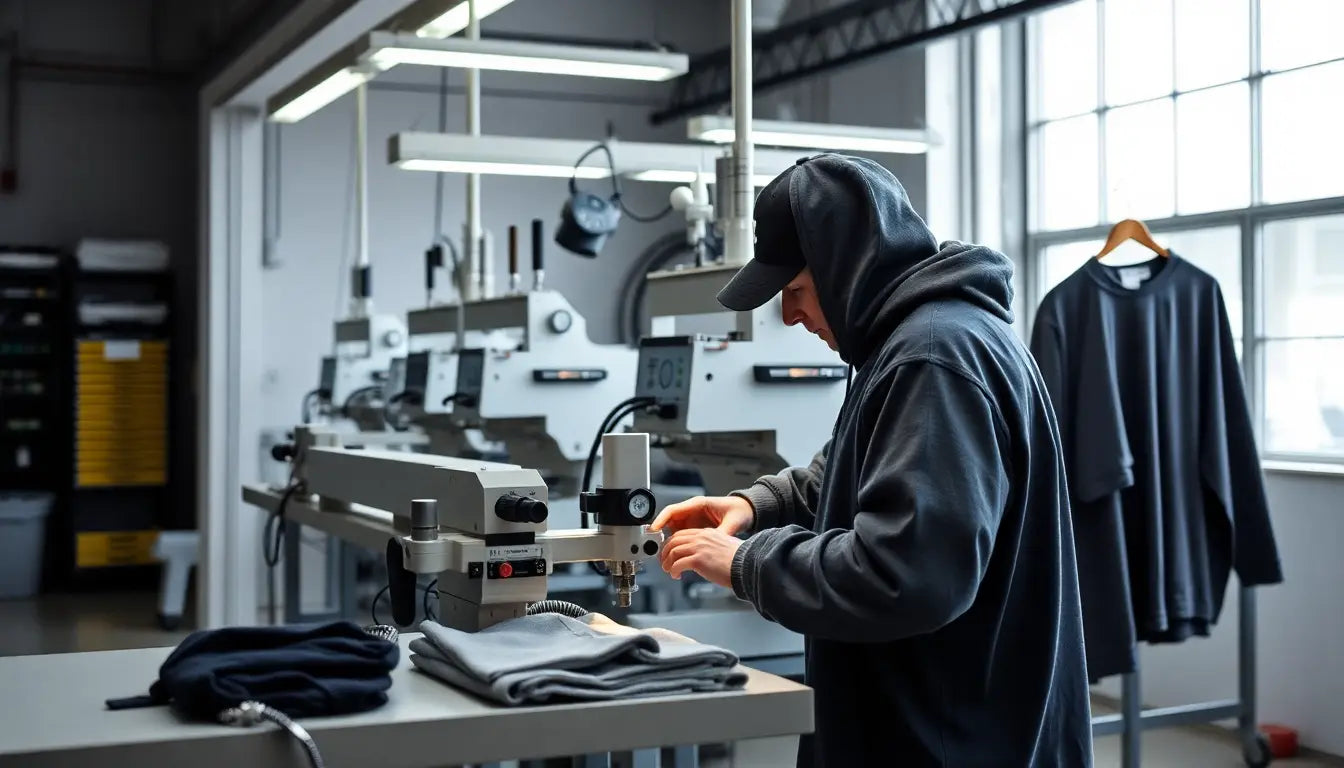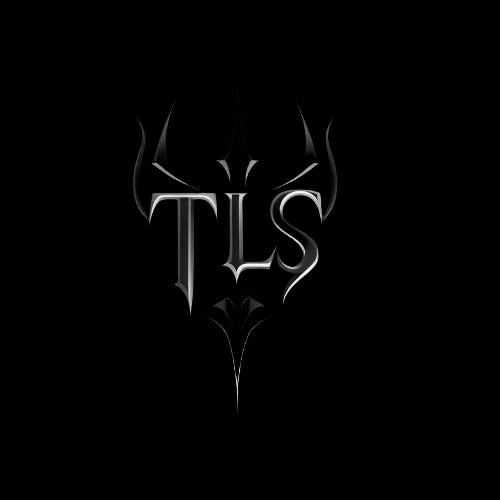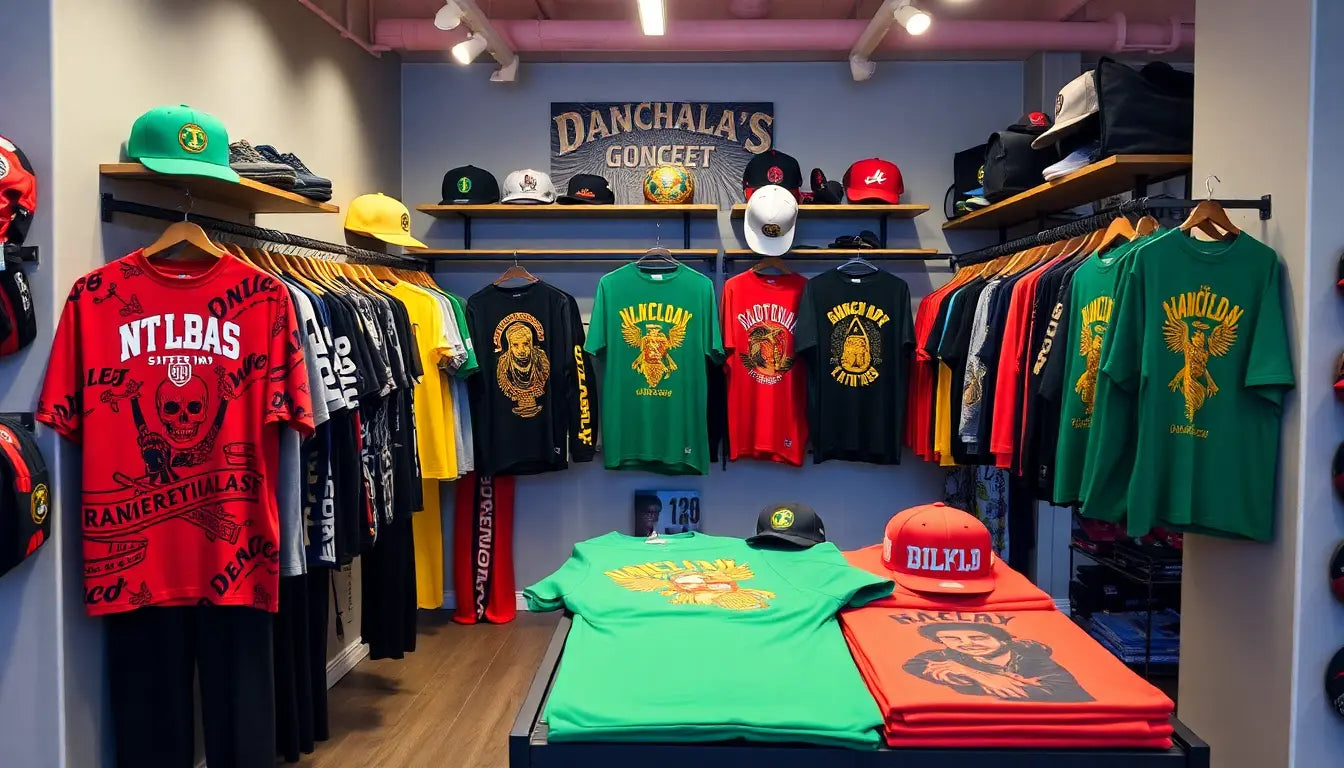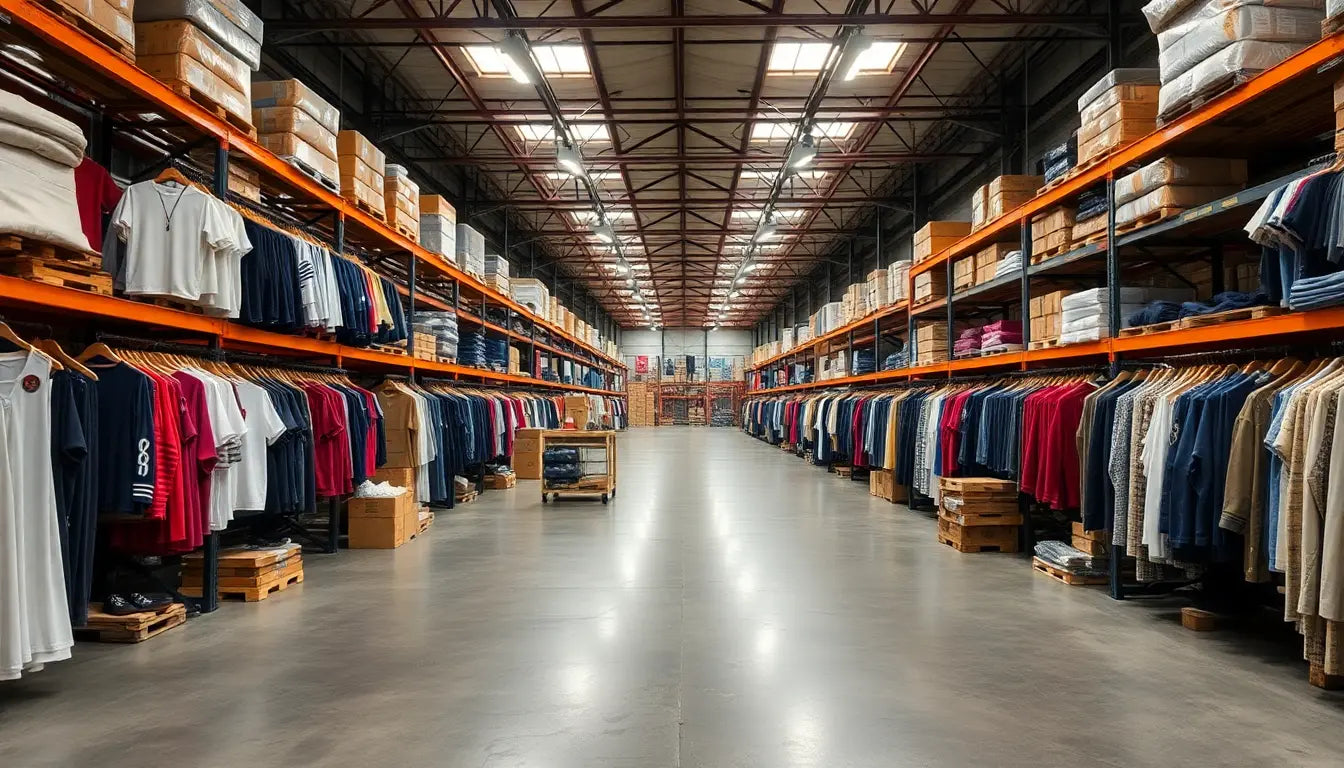
Fan Co-Creation & Microfactories: Inside the Operational Playbook Powering Tommy Lee Sparta Merch and Global Dancehall Streetwear
Introduction
In 2025, the merch landscape for music artists and streetwear brands has shifted from large centralized factories and one-way design decisions to nimble, community-driven ecosystems. For dancehall culture and artists like Tommy Lee Sparta, the opportunity lies in combining fan co-creation with a distributed microfactory network to produce authentic, fast-moving, and highly collectible streetwear that scales globally while preserving local roots.
This long-form guide unpacks the operational playbook in depth. It is written for label ops, merch teams, independent brands, and artist managers who want a repeatable, SEO-ready blueprint to launch, scale, and optimize a fan-first merch business built on microfactories.
Why This Model Works for Dancehall Streetwear
- Cultural authenticity: Dancehall is driven by local codes, slang, and style. Fan involvement ensures designs reflect what the community values.
- Speed to relevance: Microfactories and digital production techniques shrink the gap from idea to sale, keeping drops tied to real-time cultural moments.
- Lower risk: Pre-orders and small-batch production reduce unsold inventory and markdown pressure.
- Global reach with local feeling: Distributed production plus localized shipping keeps price and delivery times competitive across regions where dancehall has big audiences.
Core Concepts Defined
- Fan co-creation: The practice of involving fans in ideation, design, voting, and promotion of merchandise.
- Microfactories: Small, localized production hubs equipped with digital printing, automated embroidery, and agile cut-and-sew processes that produce low volume, customized apparel quickly.
- Community commerce: Monetization that flows directly from engaged communities using gated drops, tokenized perks, or fan clubs.
High-Level Playbook Overview
The operational flow can be summarized in 8 stages. The sections that follow expand each stage and provide tactical tools, templates, and KPI examples.
- 1. Community engagement and design sourcing
- 2. Concept validation and voting
- 3. Rapid prototyping at local microfactories
- 4. Pre-order and demand capture
- 5. Distributed production and fulfillment routing
- 6. Quality control and returns management
- 7. Launch marketing, content, and lifecycle campaigns
- 8. Measurement, iteration, and scaling
1. Community Engagement and Design Sourcing
Principles
- Start with respect for culture. Invite input, but keep an artist-led guardrail for brand coherence.
- Make participation easy. Use mobile-first platforms and avoid heavy file requirements for submissions.
- Reward contributors fairly, and make rewards visible and tangible.
Tactics
- Launch a dedicated design campaign on Discord and Instagram. Use pinned posts, submission channels, and short video briefs from the artist.
- Provide templates and assets such as logos, typefaces, and color palettes so fans create within brand-safe boundaries.
- Offer a mix of monetary and non-monetary incentives such as cash prizes, royalties, signed pieces, or a percentage of net sales for winning designs.
- Host design sprints or live streams where fans sketch and the artist provides immediate feedback.
Design Brief Template
Design Brief - Tommy Lee Sparta Merch Drop 1. Theme: Name the cultural moment or lyric inspiration 2. Colorway: Primary color palette and prohibited colors 3. Format: Front tee graphic, back graphic, sleeve treatment, patch, or embroidery 4. File requirements: High resolution PNG or vector preferred, transparent background optional 5. Submission deadline and voting dates 6. Prize and contributor rights
2. Concept Validation and Voting
Purpose
- Eliminate designs with low commercial appeal before production.
- Create hype through scarcity and community investment in final choices.
Mechanics
- Use tiered voting: community members vote on top 20 to reach a shortlist of 3 to 5.
- Incentivize voting by tying votes to early access codes or small discounts.
- Run small paid polls to gather demographic signals about willingness to pay.
3. Rapid Prototyping With Microfactories
Microfactory tech stack options
- Direct to Garment (DTG) printers for full-color short runs
- Automated embroidery machines for premium logos and patches
- Heat transfer and sublimation for polyester and athletic lines
- Small-batch cut-and-sew and on-demand screen printing for specialty garments
Operational checklist
- Provide production-ready files with color profiles and pantone matches where needed
- Request 5 to 25 prototypes to test fit, wash, and color fastness
- Record prototyping sessions to create content and to document quality checks
- Capture SKU level cost per unit for each microfactory to compare margins
4. Pre-Order, Demand Capture, and Pricing Strategy
Pre-order mechanics
- Open pre-orders with clear delivery windows and tiered pricing: early bird, standard, premium bundles
- Use scarcity as a tool: limited edition numbers signed by the artist add collectibility
- Offer contributor and fan perks such as meet and greets, exclusive digital art, or VIP event access
Pricing considerations
- Calculate landed cost including production, fulfilment, returns, and duties per region
- Set retail price with target gross margin depending on product type; premium limited tees can carry 60 to 80 percent gross margin before marketing
- Test A B pricing during pre-order window to find optimal price point
Sample Pre-Order Flow
- Landing page explains the drop, includes artist story and contributor credits
- Countdown timer and vesting tiers for limited editions
- Payment options with splits for international currencies
- Automated backer updates every 7 to 10 days during production
5. Distributed Production and Fulfillment Routing
Routing principles
- Ship from the microfactory closest to the buyer to reduce transit time and cost
- Use a central order routing system to decide whether to route to an owned microfactory or a third-party microfactory partner
Fulfillment options
- Microfactory direct to consumer for fast local shipments
- Local 3PL for countries where the microfactory lacks packing or shipping integrations
- Regional distributed inventory for high demand SKUs to reduce stockouts
Example Order Routing Logic
- Order placed in Jamaica or Caribbean region: route to Kingston microfactory
- Order placed in UK or Europe: route to microfactory in London or Rotterdam
- Order placed in US East Coast: route to microfactory in Miami or a partnered 3PL
- Fallback: route to central microfactory when no regional partner is available
6. Quality Control and Returns Management
QC best practices
- Standardize a QC checklist across all production locations covering print alignment, color accuracy, seam strength, and label placement
- Define acceptable defect thresholds and a remediation path for each microfactory
- Use remote inspection photos and short video captures for batches before fulfillment
Returns policy considerations
- Clear return windows and conditions help protect small-batch economics
- Offer exchanges and store credit to preserve revenue when possible
- Provide localized return QR codes and return centers to minimize cross-border returns cost
7. Launch Marketing and Community Commerce
Content and storytelling
- Document everything: design submissions, artist reactions, prototyping, microfactory tours, and final packaging
- Use short-form formats for discovery platforms and long-form content for owned channels
Activation tactics
- Influencer seeding and micro-influencer grassroots campaigns in dancehall communities
- Gated drops for fan club members with exclusive perks
- Collaborations with local retailers and pop-up events in key markets
Sample 30-Day Content Calendar
- Day 1: Drop announcement with artist message and community call for designers
- Day 7: Reveal top 10 shortlisted designs and open voting
- Day 14: Prototype reveal and behind-the-scenes microfactory tour
- Day 21: Pre-order launch and early bird tier opens
- Day 28: Last call for pre-orders and social proof push with influencer content
8. Measurement, Iteration, and Scaling
Key performance indicators
- Community engagement: number of design submissions, votes, and active contributors
- Conversion metrics: landing page conversion, pre-order rate, average order value
- Operational metrics: time from design to ship, defect rate, on-time fulfillment rate
- Financial metrics: gross margin by SKU and region, customer acquisition cost, and repeat purchase rate
How to iterate
- Run short learning sprints per drop to A B test packaging, pricing, and lead times
- Scale what works: move high-velocity SKUs to regional microfactories or larger short-run production
- Document playbook updates after each drop and share with all partners
Legal, IP, and Contributor Agreements
Key clauses to include in contributor agreements
- Assignment of IP or license terms describing how the artist and brand can use submitted designs
- Payment and royalty schedules for winning designs and resale provisioning
- Moral rights and attribution clauses so contributors receive credit where appropriate
- Warranties that contributors own the rights and that submissions do not infringe third party rights
Practical tips
- Keep language short and plain; contributors are more likely to sign if terms are clear
- Offer royalty percentages for top contributors or a one-time buyout depending on business model
- Use digital signature tools to speed acceptance and recordkeeping
Financial Modeling and Sample Budget
Example unit economics for a limited edition tee produced in a local microfactory
- Production cost per tee: 12 USD
- Packed and fulfilled local: 6 USD
- Payment processing and platform fees: 4 USD
- Total landed cost: 22 USD
- Retail price: 60 USD
- Gross margin: 38 USD or 63 percent
Notes
- Microfactory per-unit costs will be higher than offshore mass production, but lower markdowns and premium pricing tend to preserve overall profitability.
- For global scaling, track landed cost by region and build region-specific pricing to maintain consistent margins.
Sustainability and Materials Strategy
Material choices and packaging
- Offer core items in organic cotton or recycled blends and limited technical lines in recycled polyester
- Minimalist packaging with recycled mailers reduces waste and aligns with consumer expectations
- Communicate material choices clearly on product pages to capture conscious consumer share
Carbon and supply chain considerations
- Local production reduces emissions from long-haul shipping but measure microfactory energy sources
- Consider carbon offsets for international shipments and highlight the impact in marketing
Technology and Integrations
Example stack
- Commerce: Shopify or headless commerce like Elastic Path for flexible checkout and drop scheduling
- Community: Discord for active engagement, Instagram and TikTok for discovery, email for retention
- Production management: lightweight ERP with order routing, such as ShipBob enterprise features or bespoke order router
- Design and asset management: cloud storage with version control and brand library access for microfactories
- Payments: local payment processors per region and support for split payments for collaborations
- Analytics: GA4, Looker studio dashboards, and product analytics for conversion funnel tracking
Marketing SEO Playbook for High Ranking
On-page SEO tactics
- Use the main keyword in the title tag, H1 and within the first 100 words of the article
- Structure content with multiple H2s and H3s for scannability and semantic relevance
- Include longtail keywords such as fan co-creation merch, dancehall streetwear microfactories, and Tommy Lee Sparta merch drops
- Optimize images with descriptive alt text and compressed file sizes for speed
- Add FAQ schema on the page and structured data for product releases and events
Off-page and community-driven SEO
- Leverage press around drops and microfactory tours — music and fashion sites linking back to your content improves authority
- Encourage user-generated content and product pages shared on social platforms to increase referral traffic and backlinks
- Coordinate with local retailers and collaborators to cross-link and co-promote
Risk Management and Contingency Planning
- Microfactory failure plan: maintain at least one backup production partner per region
- Supply chain disruptions: negotiate flexible contracts and prioritize raw material stocks for signature SKUs
- PR risk: establish a rapid response policy and a community communications lead who can speak to fans transparently
- Fraud prevention: set fraud detection thresholds for high-value pre-orders and manual review for suspicious transactions
Scaling Roadmap: 90 Day Pilot to 12 Month Scale
90 Day Pilot
- Week 1 to 2: Community brief, collect submissions, and select winners
- Week 3 to 4: Prototype production at local microfactories, content capture, and QC process definition
- Week 5 to 7: Pre-order launch, demand sensing, and early bird promotion
- Week 8 to 12: Fulfillment, community recaps, lessons learned, and KPI review
6 to 12 Month Scale
- Formalize network of microfactories in target regions and negotiate rate cards
- Automate order routing and integrate international taxes and duties into checkout
- Expand product mix to include headwear, accessories, and technical pieces
- Roll out pop-ups and retail collaborations in key markets to increase brand presence
Case Studies and Hypothetical Scenarios
Hypothetical successful drop
- Limited run of 500 signed tees sold out in 72 hours with 35 percent pre-order conversion from the voting pool
- Distributed production reduced average delivery time from 21 days to 5 days in three top markets
- Repeat purchase rate among buyers increased by 18 percent after a follow-up drop with exclusive fan perks
Common failure scenarios and fixes
- Underpricing artisanal or limited pieces: fix with tiered editions and better storytelling of scarcity
- Inconsistent quality across hubs: fix with swatch libraries, color calibration, and centralized QC training
- Low community turnout: fix with paid seeding of entries, higher contributor incentives, and stronger social proof from the artist
Frequently Asked Questions
How much does it cost to start a microfactory based merch program
Costs vary, but a minimal pilot working with partner microfactories typically requires a 5 to 15k USD budget to cover design incentives, prototypes, initial marketing, and a small pre-order run. Building owned microfactory capacity is capital intensive and usually starts at 100k USD and up depending on equipment and site build-out.
Can fans retain IP rights for their winning designs
Yes, but you must be explicit. Common approaches include a one-time buyout, an ongoing royalty, or a nonexclusive license that grants the brand the right to use designs for defined purposes. Clear contributor agreements are essential.
How do microfactories handle scale during a viral drop
Microfactories excel at agility but not massive volume. For potential viral spikes, maintain relationships with short-run commercial printers or regional partners that can scale to medium volumes quickly while keeping quality standards in place.
Appendix: Checklist for Launch Day
- Pre-launch QA: checkout test, tax and shipping calculations validated, and promo codes active
- Customer communications: pre-order confirmation templates and expected delivery windows ready
- Operations: microfactory production schedule and QC windows confirmed
- Marketing: social posts scheduled, influencer packages shipped, and live stream lined up
- Legal: contributor agreements signed and licensing confirmed for final assets
Conclusion
Fan co-creation and microfactories together form a high-performance operational playbook that is uniquely suited to the energy and global footprint of dancehall streetwear. For artists like Tommy Lee Sparta and teams who care deeply about cultural authenticity and speed to market, this model reduces risk, strengthens fan bonds, and opens new revenue channels. The approach requires discipline in operations, legal clarity with contributors, and a tech stack that ties community, commerce, and production together. When done well, it converts cultural relevance into sustainable business growth while honoring the local scenes that birthed the movement.
Next Steps and Action Plan
- Assemble a cross-functional pilot team including community, design, operations, legal, and marketing
- Run a 90 day pilot focused on a single limited drop using local microfactory partners
- Measure the KPIs above and iterate on pricing, production partners, and community incentives
- Document the playbook and scale regionally with confidence once unit economics and quality control are stable


